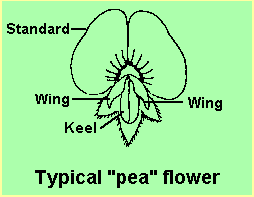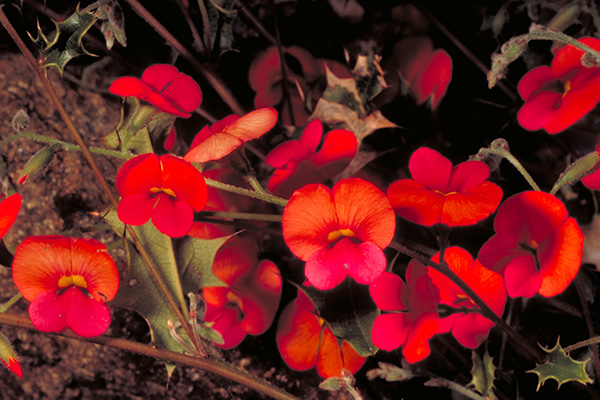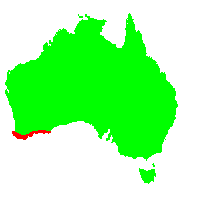General Description:
Chorizema is an endemic genus of about 18 species, all but one of which occur in the south west of the continent. They are generally small shrubs characterised by having very brightly coloured red and orange pea-shaped flowers, which give rise to the common name of “flame pea”. Pea flowers consist of 4 petals; the “standard”, the “keel” and two “wings” as shown in the diagram.
These plants (as well as Acacia) are often colonising species which germinate quickly after fires to stabilise the soil and to provide nitrogen (all are legumes able to “fix” nitrogen from the atmosphere in nodules on their roots).

The most commonly grown member of this genus is C.cordatum, a small, spreading shrub with heart-shaped leaves. C.ilicifolium is very similar to that species and differs mainly in the shape of the leaves which are deeply lobed with prickly teeth. It is a small, weakly spreading plant which reaches about 0.5 metres in height. The flowers are relatively large (about 10-12 mm diameter), usually very brightly coloured in red and orange. They are seen in late winter and spring.
C.ilicifolium is best suited to drier climates with low summer humidity. It will grow in humid areas but is likely to be short-lived under those conditions. The species appreciates some protection from full sun as the flowers may suffer sunburn and performs best in well drained soils with assured moisture. It will recover from damage from light frost but is not suited to areas where moderate to heavy frost are experienced.
Propagation from seed is relatively easy following pre-treatment to break the physical dormancy provided by the impervious seed coat. Pre-treatment can be carried out by abrasion or by the use of boiling water (further details can be found in under the “Propagation” tab of the “Pea Family” page). The seed retains viability for many years. Cuttings strike well using firm, current season’s growth.

Chorizema ilicifolium
Photo: Brian Walters
 Australian Native Plants Society (Australia)
Australian Native Plants Society (Australia)













